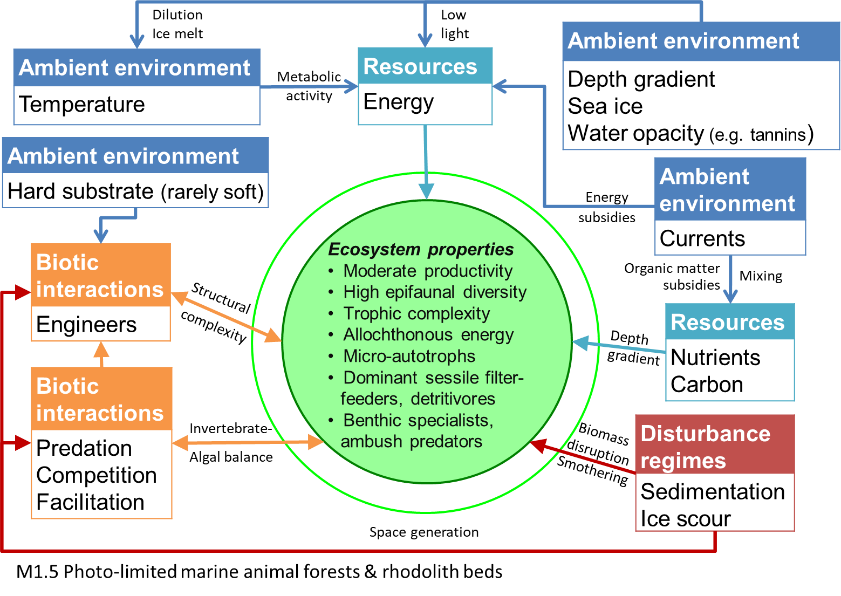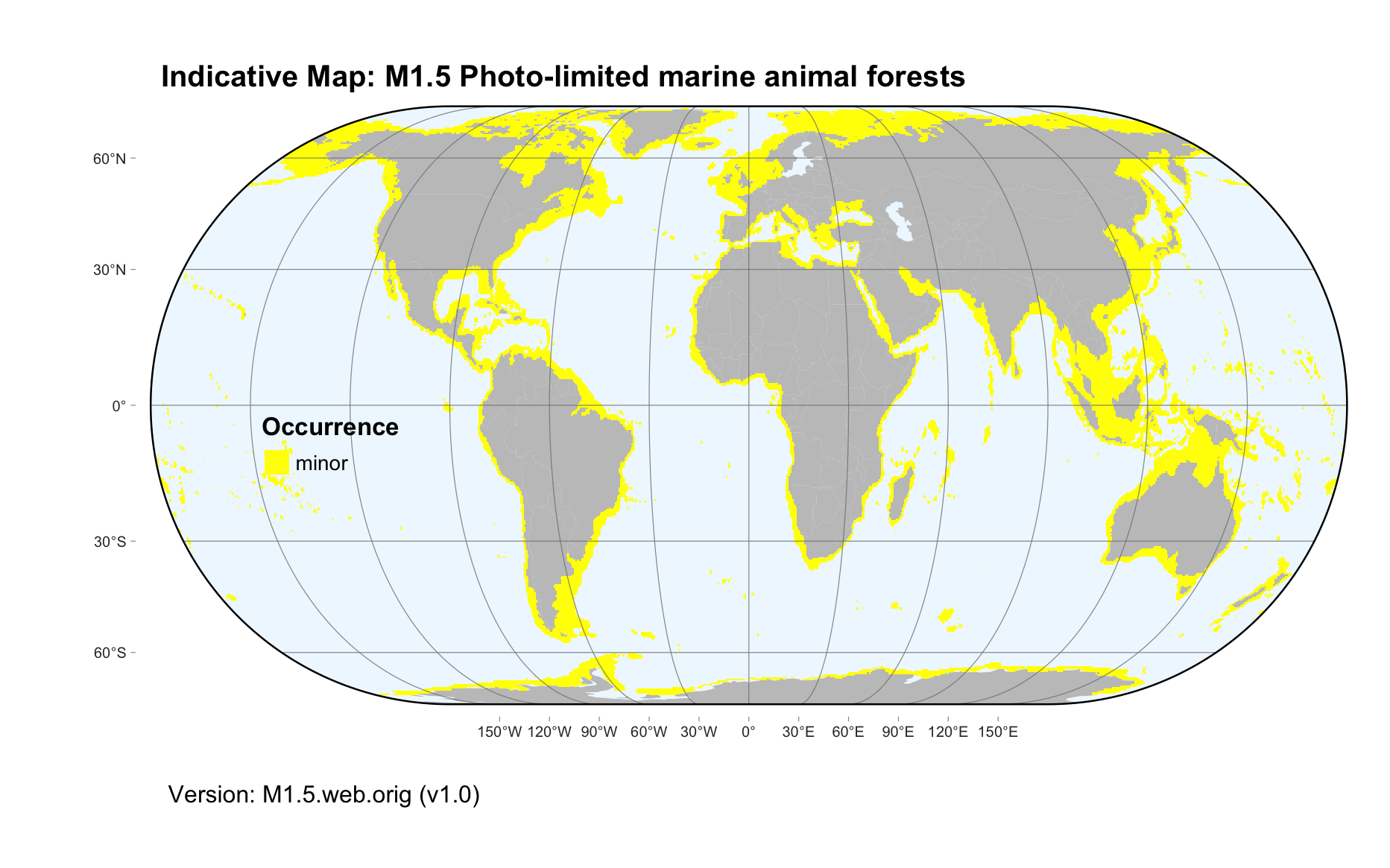Global ecosystem typology
Alternative site for the Global ecosystem typology with additional information for ecosystem profiles and indicative maps.
This site is maintained by jrfep
M1.5 Photo-limited marine animal forests
Biome: M1. Marine shelf biome
Contributors:
(texts)
These subtidal biogenic ecosystems, formed by either a single species or a community of sessile filter feeders such as sponges, ascidians or aphotic corals, are found mostly on hard substrates. Low light due to depth, turbidity, ice cover or tannins from terrestrial runoff means that photosynthesis is limited to microphytobenthos (like microalgae and bacteria) or coralline algae. As a result, nutrient flux from surface waters is important. A high diversity of invertebrates and fish are also associated with these complex, three-dimensional forest-like habitats.
Key Features
Largely heterotrophic systems dominated by megabenthic suspension feeders and associated diverse epifauna, microphytobenthos and fish.
Overview of distribution
Low light tropical to polar coastal waters.
Profile versions
- v1.0 (2020-01-20): JS Stark; EJ Gregr; DA Keith
- v2.0 (2020-05-27): JS Stark; EJ Gregr; S Rossi; SN Porter; AH Altieri; DA Keith
- v2.01 ():
- v2.1 (2022-04-06): JS Stark; EJ Gregr; S Rossi; SN Porter; AH Altieri; DA Keith Full profile available at official site
Main references
Selected references for this functional group:
Baldwin C, Tornabene L, Robertson D (2018) Below the mesophotic Scientific Reports 8: 4920
Rossi S. (2013) The destruction of the ‘animal forests’ in the oceans: towards an over-simplification of the benthic ecosystems Ocean & coastal management 84: 77-85
Rossi S, Bramanti L, Gori, A, Orejas C (2017) Marine Animal Forests: The ecology of benthic biodiversity Hotspots Springer, Berlin
Diagrammatic assembly model

Maps
Maps are indicative of global distribution patterns are not intended to represent fine-scale patterns. The maps show areas of the world containing major (coloured red) or minor occurrences (coloured yellow) of each ecosystem functional group. See general notes on maps.
There are 2 alternative versions of the indicative map for this functional group, please compare description and sources below.
M1.5.IM.orig_v1.0
Datasets
- GSFM-2014
Map references
Harris PT, Macmillan-Lawler M, Rupp J, Baker EK (2014) Geomorphology of the oceans. Marine Geology 352: 4-24. 10.1016/j.margeo.2014.01.011
M1.5.web.orig_v1.0

Datasets
- GSFM-2014
Map references
Harris PT, Macmillan-Lawler M, Rupp J, Baker EK (2014) Geomorphology of the oceans. Marine Geology 352: 4-24. 10.1016/j.margeo.2014.01.011
Check: the Glossary / Profile structure / the public document